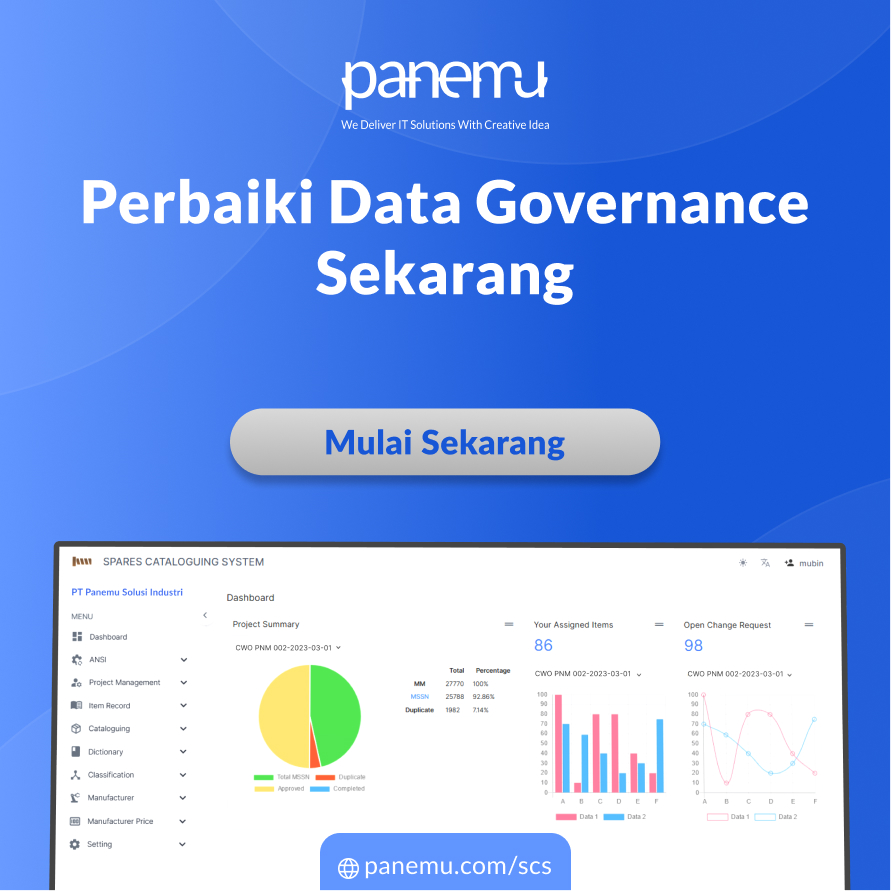In today’s data-driven business environment, accurate and organized information is essential for effective decision-making. One of the most critical yet often overlooked elements in Enterprise Resource Planning (ERP) systems is Item Master Data. This dataset serves as the backbone of material management, ensuring consistency, efficiency, and accuracy across procurement, inventory, maintenance, and financial processes.
For industries that rely on Maintenance, Repair, and Operations (MRO) inventory, Item Master Data plays a crucial role in cataloguing spare parts, consumables, and other operational materials. But what exactly is Item Master Data, and why is it so essential in ERP-driven organizations?
What is Item Master Data?
Item Master Data is a centralized database that contains all relevant information about an organization’s materials, products, and spare parts. Each item stored in the system has a unique record that includes key attributes such as:
✅ Item Name & Description – Standardized naming conventions prevent confusion across departments.
✅ Part Number & SKU – Unique identifiers help in accurate tracking and ordering.
✅ Manufacturer & Supplier Details – Ensures reliable sourcing and quality control.
✅ Unit of Measure (UoM) – Defines how items are counted, stored, and consumed (e.g., pieces, kilograms, liters).
✅ Stocking & Reorder Levels – Prevents stockouts or overstocking through automated replenishment alerts.
✅ Price & Cost Information – Helps in budgeting, cost analysis, and financial planning.
✅ Asset & Maintenance Linkages – Associates items with specific machinery or equipment to streamline maintenance operations.
By maintaining accurate and structured Item Master Data, companies can eliminate inconsistencies, reduce errors, and improve efficiency in MRO cataloguing and overall ERP functions.
The Role of Item Master Data in ERP Systems
ERP systems integrate various business functions, from procurement and finance to supply chain and maintenance. Without well-structured Item Master Data, ERP systems can become disorganized and inefficient.
Here’s how Item Master Data impacts key ERP modules:
1. Procurement & Supplier Management
🔹 Ensures that purchasing teams select the right item based on standardized descriptions.
🔹 Eliminates duplicate orders caused by inconsistent item naming.
🔹 Helps in supplier evaluation and price comparisons for cost optimization.
2. Inventory & Warehouse Management
🔹 Prevents stock duplication by ensuring a single, accurate entry for each item.
🔹 Facilitates real-time inventory tracking and automated reordering.
🔹 Reduces storage inefficiencies by linking items to the correct warehouse location.
3. Maintenance, Repair & Operations (MRO) Management
🔹 Links spare parts and consumables to specific assets, enabling faster maintenance processes.
🔹 Reduces downtime by ensuring critical components are always available.
🔹 Enables predictive maintenance by tracking historical usage of parts and consumables.
4. Financial & Cost Control
🔹 Standardized item pricing ensures accurate cost calculations and budgeting.
🔹 Prevents fraudulent purchases by enforcing approval workflows for costly items.
🔹 Helps in expense tracking by associating each item with a specific cost center or project.
When Item Master Data is well-managed, businesses experience higher efficiency, lower costs, and improved decision-making across ERP functions.
Challenges in Managing Item Master Data (And How to Overcome Them)
Despite its importance, many organizations struggle to maintain clean, accurate, and reliable Item Master Data. Common issues include:
1. Data Duplication & Inconsistency
❌ Different departments may create duplicate entries for the same item using slightly different descriptions.
💡 Solution: Implement data governance policies and use automated deduplication tools to standardize entries.
2. Inaccurate or Incomplete Data
❌ Missing details like part numbers, manufacturer info, or unit of measure can lead to incorrect purchases.
💡 Solution: Enforce mandatory fields for item creation and conduct regular audits to maintain data integrity.
3. Lack of Standardization in Naming & Classification
❌ Vague or inconsistent item descriptions can cause confusion in procurement and inventory.
💡 Solution: Use international classification standards (e.g., UNSPSC, ISO 8000) and implement a naming convention policy.
4. Poor Integration Between Systems
❌ Inconsistencies arise when data is not synchronized across ERP, procurement, and inventory systems.
💡 Solution: Ensure real-time data synchronization and use master data management (MDM) software.
By addressing these challenges, businesses can ensure a clean and reliable Item Master Data structure that enhances the overall efficiency of ERP operations.
Why Item Master Data is Critical for MRO Cataloguing
MRO (Maintenance, Repair, and Operations) inventory includes essential spare parts, tools, lubricants, and consumables that keep production and maintenance running smoothly. However, poor data management in MRO cataloguing can lead to:
❌ Excess stock – Unnecessary purchases due to lack of visibility into existing inventory.
❌ Stockouts & downtime – Critical parts are unavailable when needed, delaying repairs.
❌ Procurement inefficiencies – Ordering the wrong parts due to inconsistent descriptions.
When properly integrated with ERP, Item Master Data optimizes MRO cataloguing by:
✔ Providing a single source of truth for all spare parts and consumables.
✔ Standardizing naming and classification, reducing errors in procurement.
✔ Linking items to specific equipment, ensuring maintenance teams always get the right parts.
✔ Automating reordering processes, preventing critical shortages.
By maintaining clean, structured Item Master Data, businesses can eliminate inefficiencies in MRO procurement and inventory management.
Beyond ERP: The Long-Term Impact of Item Master Data on Business Growth
Item Master Data is not just a technical requirement—it’s a strategic asset that drives:
1. Smarter Decision-Making
With accurate and structured data, companies can make better purchasing, maintenance, and budgeting decisions based on real-time insights.
2. Digital Transformation Readiness
A well-organized Item Master Data system ensures seamless integration with AI, IoT, and predictive analytics, enabling smarter automation and future scalability.
3. Compliance & Risk Mitigation
Standardized item records help companies comply with ISO, safety, and environmental regulations, reducing legal and operational risks.
4. Competitive Advantage
Businesses that effectively manage Item Master Data reduce costs, optimize efficiency, and minimize downtime, gaining a strong edge over competitors.
Conclusion: Strengthening ERP with a Robust Item Master Data Strategy
Item Master Data is the foundation of successful ERP implementation, enabling businesses to:
✅ Improve procurement accuracy and eliminate duplicate purchases
✅ Enhance inventory control and avoid stock shortages or excesses
✅ Optimize MRO cataloguing for faster maintenance operations
✅ Ensure cost efficiency through structured financial tracking
✅ Streamline compliance with standardized item classification
🚀 Ready to transform your Item Master Data strategy? Contact Panemu today for expert guidance on building a structured, error-free data management system that enhances your ERP and business performance!